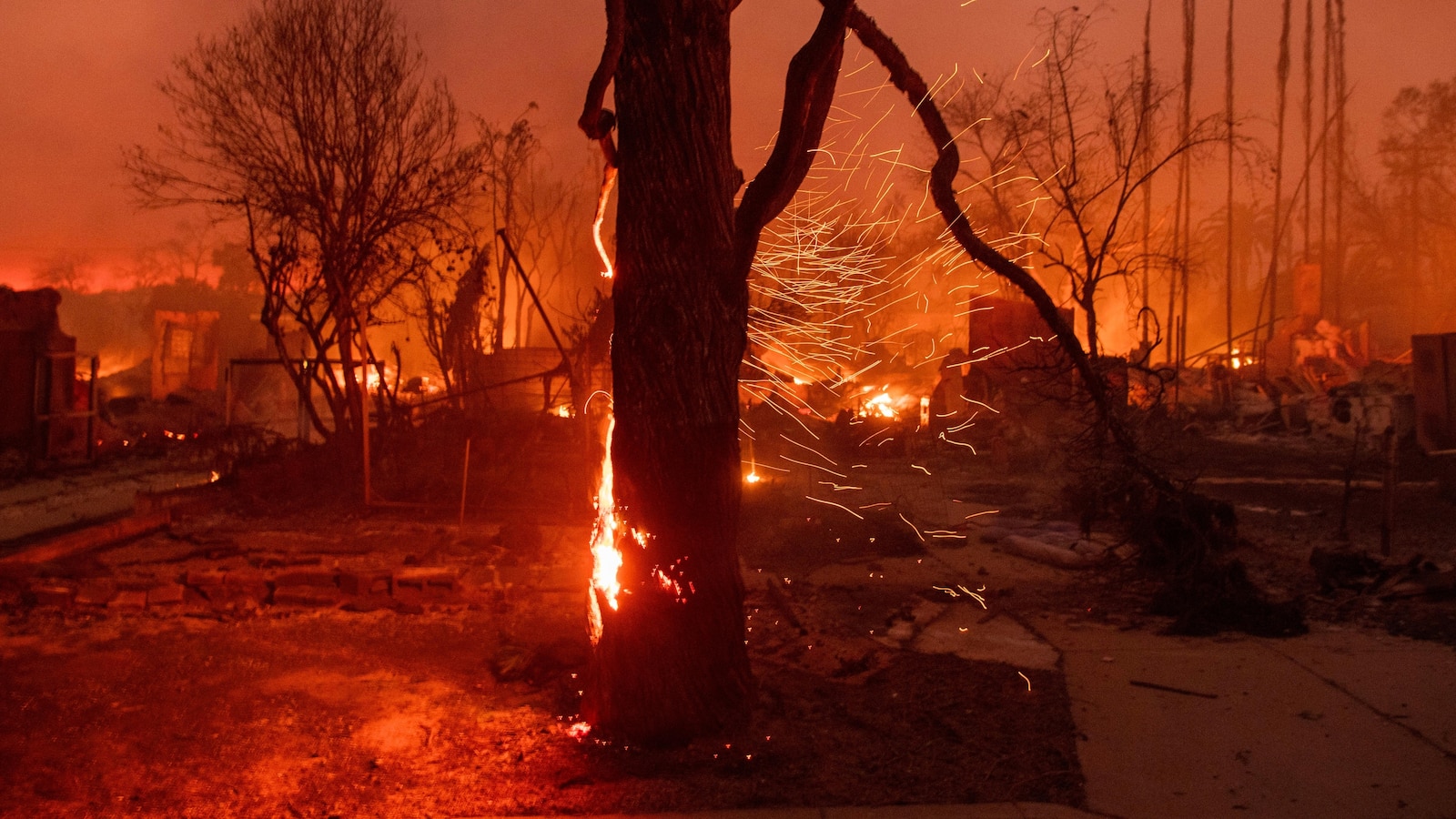Will LA’s Urban Forest Survive the Flames? The Current Threat from Wildfires
As wildfires continue to pose an alarming threat to Los Angeles, advocates for the city’s urban forest are holding their breath. The lush greenery that characterizes many neighborhoods stands at a critical juncture, with fierce flames encroaching upon these vital green spaces. The resilience of LA’s urban forest, a crucial component of the city’s ecosystem, is increasingly under scrutiny as climate change exacerbates the frequency and intensity of wildfires.
The Importance of Urban Forests in Los Angeles
Before delving into the current threats, it’s essential to understand why LA’s urban forest is so significant. Urban forests play a pivotal role in:
- Improving Air Quality: Trees absorb carbon dioxide and release oxygen, significantly enhancing air quality. They also filter pollutants, making urban environments healthier.
- Reducing Heat Island Effect: The presence of trees cools the surrounding area, combating the urban heat island effect that can increase temperatures in densely populated areas.
- Enhancing Biodiversity: Urban forests provide habitats for various species, promoting biodiversity in an otherwise concrete-dominated landscape.
- Increasing Property Values: Studies have shown that homes located near green spaces tend to have higher property values, benefiting local economies.
- Providing Mental Health Benefits: Access to green spaces has been linked to improved mental health, providing residents with places to relax and unwind.
Given these benefits, the survival of LA’s urban forest is not just an environmental issue; it’s a matter of public health, economic stability, and community well-being.
Current Challenges Facing LA’s Urban Forest
As wildfires threaten the city, several challenges loom large over LA’s urban forest:
Escalating Wildfire Risks
Wildfires are becoming increasingly common in California, driven by a combination of dry conditions, high temperatures, and strong winds. In recent years, the state has witnessed devastating wildfires that have ravaged both rural and urban areas. The risk for Los Angeles is particularly pronounced due to its unique geography, which includes a mixture of densely populated areas and brush-covered hillsides.
Climate Change Factors
Climate change has introduced new dynamics to wildfire behavior. Warmer temperatures and prolonged droughts create an environment ripe for fires. As these conditions persist, the urban forest faces the dual threat of mortality from wildfires and the stress of changing weather patterns.
Invasive Species
In addition to fire risks, invasive species are increasingly impacting the health of urban trees. Pests like the polyphagous shot hole borer and diseases such as Sudden Oak Death are decimating tree populations, making them more vulnerable to fire damage.
Advocacy and Response Efforts
In light of these challenges, various organizations and community groups have mobilized to protect LA’s urban forest. Their efforts focus on:
- Fire Mitigation Strategies: Programs aimed at reducing fuel loads through controlled burns and vegetation management help lower the risk of catastrophic fires.
- Community Engagement: Educating residents on the importance of urban trees fosters a sense of stewardship and encourages local involvement in preservation efforts.
- Tree Planting Initiatives: Groups like TreePeople advocate for the planting of more trees, aiming to enhance the urban canopy and promote ecological resilience.
- Policy Advocacy: Lobbying for stronger environmental policies that protect urban forests is crucial for long-term sustainability.
Success Stories in Urban Forest Resilience
Despite the overwhelming challenges, there are glimmers of hope showcasing the resilience of LA’s urban forest:
Community Resilience Projects
Several community-driven projects have emerged, focusing on reforesting areas affected by wildfires. For example, the City of Los Angeles has launched initiatives to plant native trees that are more resilient to fire and drought conditions. These projects not only restore lost green spaces but also engage local residents, building a sense of community around the preservation of urban forests.
Innovative Urban Planning
Urban planners in Los Angeles are increasingly recognizing the importance of integrating green spaces into city designs. New developments often include parks and green corridors, which can act as firebreaks while also enriching the urban landscape. This forward-thinking approach not only benefits the environment but also enhances the quality of life for residents.
The Path Forward: Hope for LA’s Urban Forest
While the threat of wildfires looms large, there is a growing recognition of the need to protect and enhance LA’s urban forest. Here are some steps that can be taken moving forward:
- Investing in Research: Continued research into tree resilience and fire management practices will be crucial in developing effective strategies to protect urban forests.
- Strengthening Community Networks: Building stronger networks among local organizations, residents, and government agencies can amplify efforts to protect urban trees.
- Promoting Sustainable Practices: Encouraging sustainable landscaping and gardening practices can further bolster tree health and resilience.
As advocates hold their breath amidst the ongoing threat of wildfires, the resilience of LA’s urban forest remains a beacon of hope. By fostering community involvement, implementing innovative strategies, and investing in restoration efforts, it is possible to protect these essential green spaces for future generations. While the flames may threaten today, the spirit of collaboration and commitment to preserving LA’s urban forest may just ensure its survival in the long run.
See more Your Daily Weather



